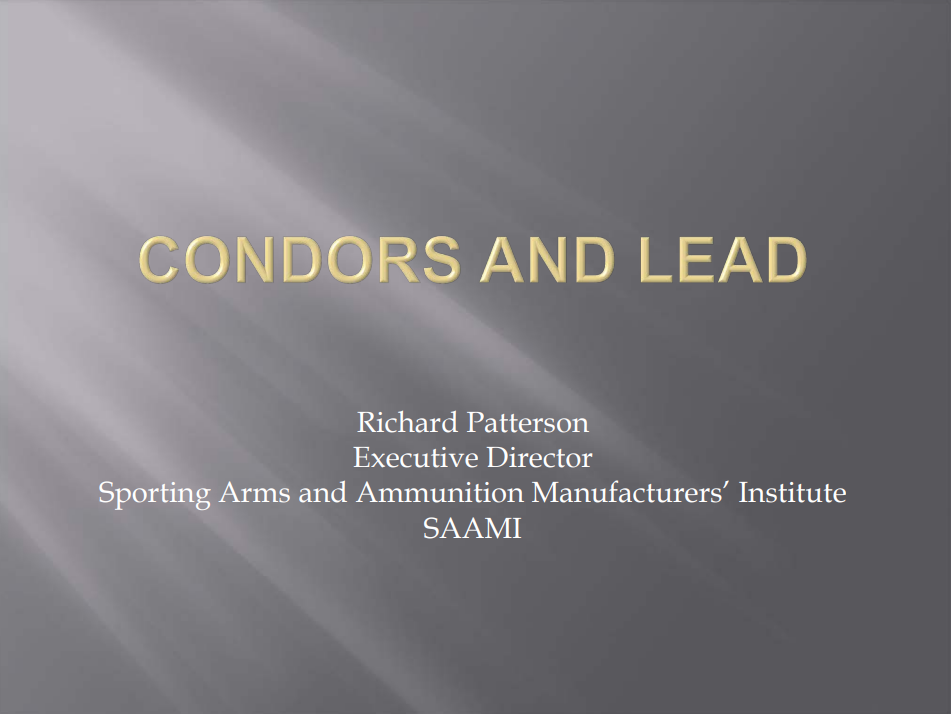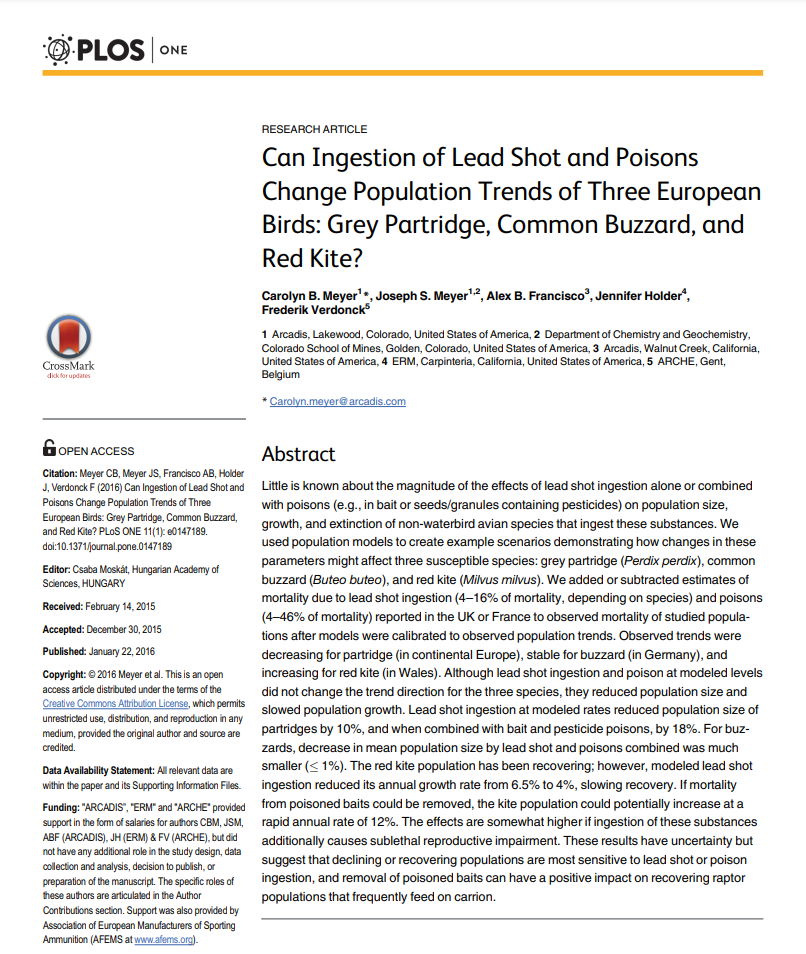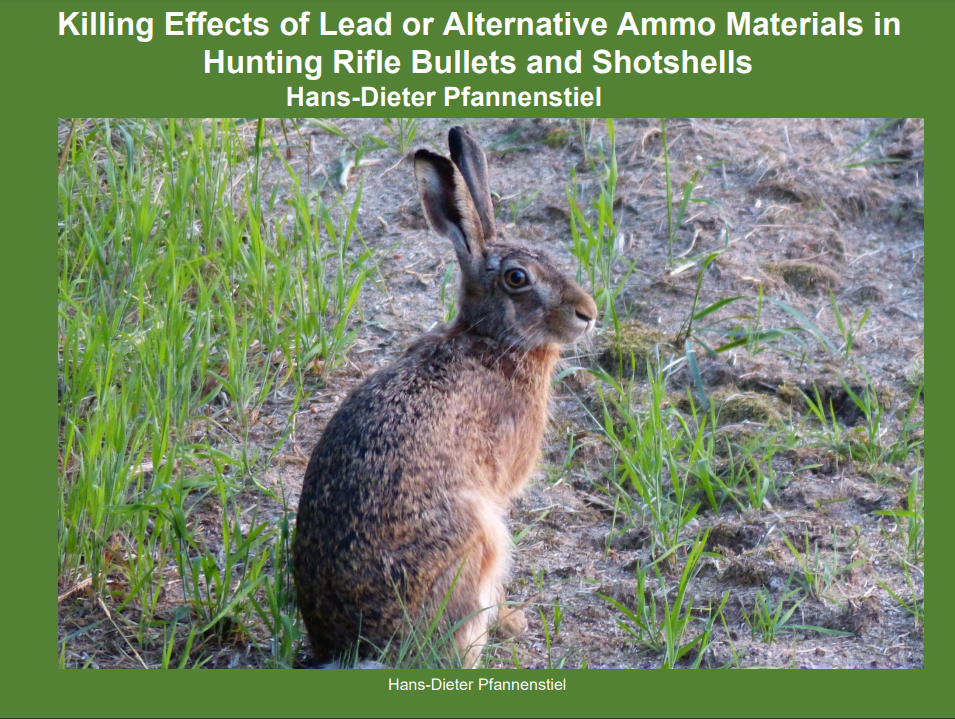Method to assess the potential magnitude of terrestrial European avian population reductions from ingestion of lead ammunition
This study proposes a 2-step method using carcass data and population models. The method estimates percentage of deaths diagnosed as directly caused by lead poisoning as a lower bo




